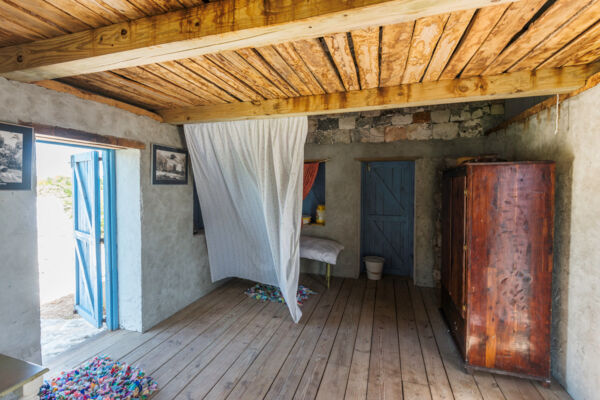National Museum and Heritage Site
Buttercup Road, Grace Bay, Providenciales
The National Museum site on Providenciales hosts a small collection of outdoor historical exhibits. The current site and exhibits are a placeholder for a modern museum building, for which funds are currently being raised for.
This heritage site on Providenciales is a counterpart to the Turks and Caicos National Museum in Cockburn Town on the island of Grand Turk, which houses important exhibits on the Molasses Reef Wreck (the oldest excavated European shipwreck in the Americas), and on the Taino people, the first known inhabitants of the islands.
When the Providenciales museum branch is completed, the origin of exhibits and artifacts may determine which museum they are displayed in. As our country’s name suggests, our archipelago is made up of two island groups: the Turks Islands and the Caicos Islands.
Subjects and items related to the Caicos Islands and Tainos, such as the Molasses Reef Wreck, may be relocated to Providenciales, and exhibits tied to the Turks Islands, such as those on the U.S. Space Race and the HMS Endymion wreck, would be displayed in Grand Turk.
The Providenciales Museum would also allow space for exhibits on the Loyalist Caicos plantations, the historic Trouvadore slave shipwreck, the cave guano mining days, the sisal plantings, and the nation’s late 1900s foray into luxury tourism.
Visiting

Tour admission is $5.
There is currently no charge for visiting the museum grounds. Donations towards the future museum are greatly appreciated.
Hours
The National Museum is open for tours Monday to Friday, from 9:00 AM to 1:00 PM.
Location
The museum grounds are located in the Village at Grace Bay on the western side of the Grace Bay region.
Look for the large roundabout near The Sands resort, and take the exit with the arched entry. Once through, continue straight (through the second roundabout) for 1400 feet (420 m) to the museum and heritage site.
Exhibits
The centerpiece of the museum site is a reproduction of a late 1800s to early 1900s home, an example of a common residence at the time. This building is surrounded by several varieties of indigenous plants and trees that played an important role in local living, including species used for medicinal purposes, and hardwoods that were used in boat construction.
This structure was assembled from locally quarried cut limestone and plastered with stucco to prevent the decay of the soft rock, as was the most common for nearly all houses, warehouses, and cisterns.
The outer roof also follows the traditional practice, with a thatch palm (Coccothrinax inaguensis) frond covering.
Historical Anchors
Other fascinating artifacts include centuries-old ships’ anchors and a 1700s cannon.
The Caicos Sloop
Another interesting feature is on the Caicos Sloop, a small locally built vessel that served as the mainstay of trade, transport, and fishing in the Turks and Caicos for centuries.
Onsite is the hull of a small Caicos Sloop, and the half-scale framework model of another. The story of how these sailboats were made by hand is fascinating in itself.
Events
This location often hosts ‘Evening with the Experts', with local and visiting experts holding talks on a variety of subjects. This typically relates specifically to the Turks and Caicos and the Caribbean. A calendar is available on the Museum’s website.
